Australian Tropical Rainforest Plants - Online edition
Bombax ceiba var. leiocarpum A.Robyns
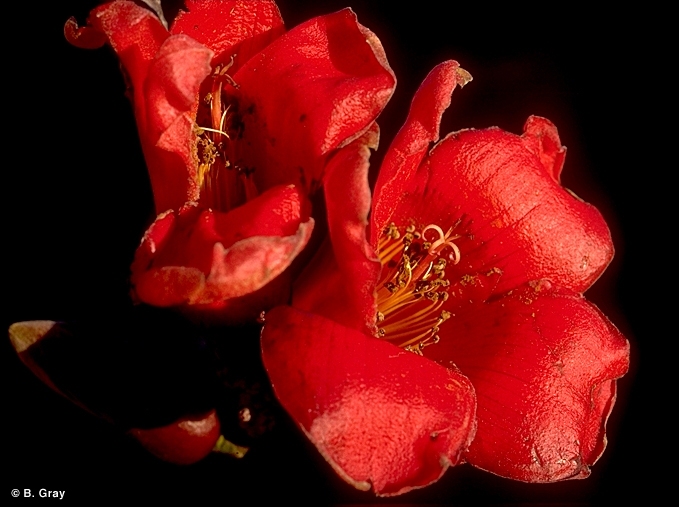
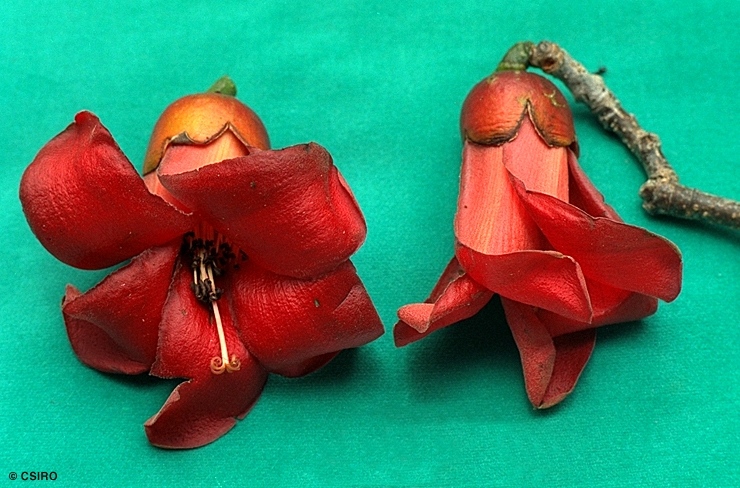
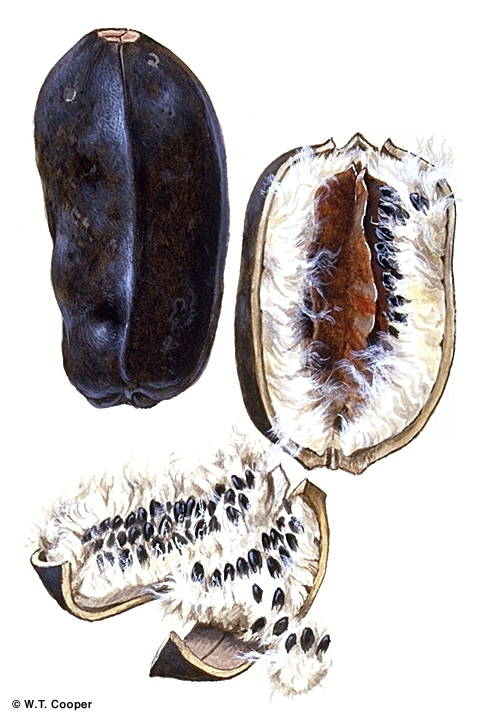
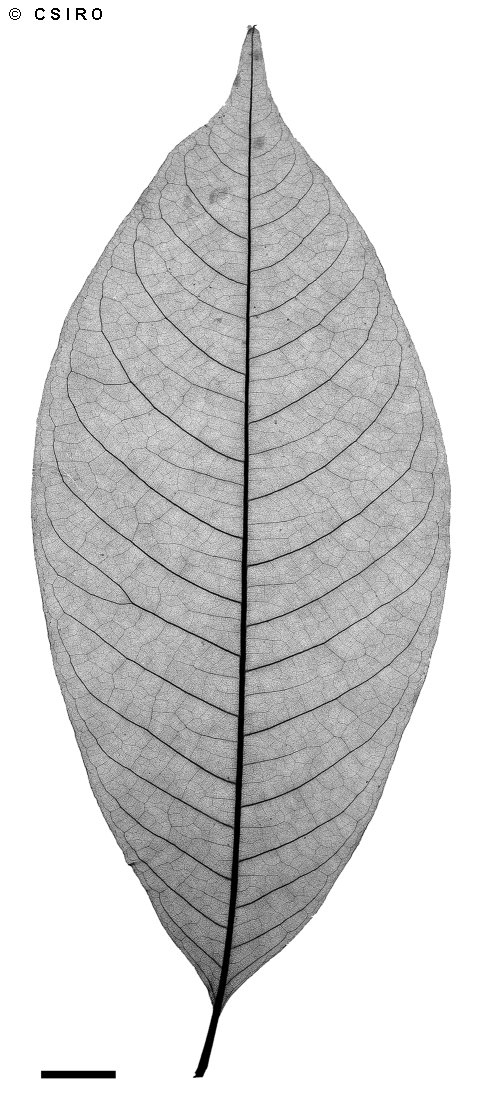

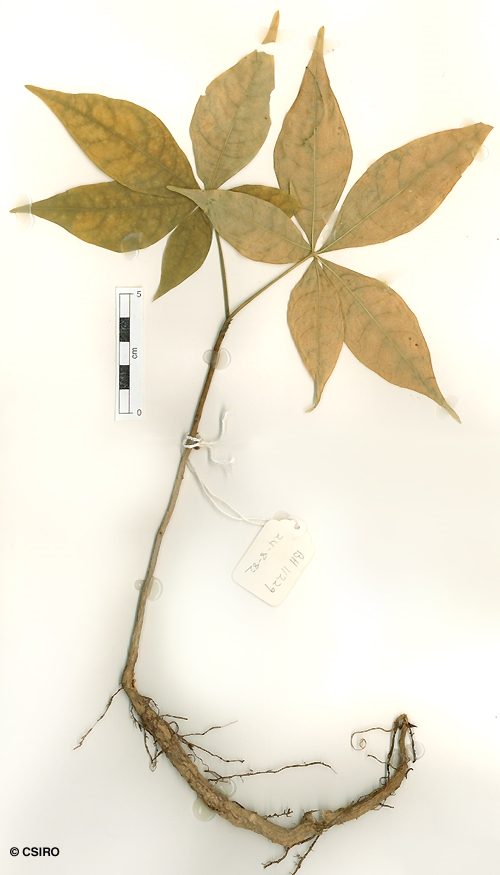
Robyns, A.G.M.W.A. (1963) Bulletin Jardin Botanique Bruxelles 33: 97. Type: Northern Territory, Specht 1175. Holo:L, Iso; K,US.
Northern Cottonwood; Kapok; Kapok Tree; Red Kapok; Red Silk-cotton Tree; Red Flowered Kapok; Bombax; Semul; Silk Cotton Tree
Capsules about 10 cm long, densely packed with large quantities of cream fibrous material which resembles cotton wool and surrounds the seed, but is not really attached to the seed.
Cotyledons cordate, apex acuminate. Root thickened, carrot-like (Daucus carota). At the tenth leaf stage: leaves palmate, leaflets about five, elliptic, apex acuminate, base attenuate; stipules triangular, papery. Seed germination time 8 to 10 days.
The large fruit of this species yield an inferior grade of kapok that is sometimes used in India. Cooper & Cooper (1994).
Food plant for the larval stages of the Common Aeroplane Butterfly. Common & Waterhouse (1981).
Often planted in large gardens and parks for the large red flowers.
Flowers are produced in the dry season when the tree is completely leafless and when most other forms of vegetation in the community are looking rather drab and forlorn.





